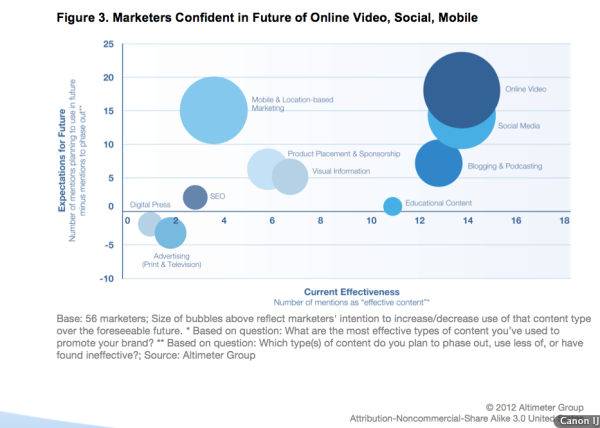
The written word seems to be on the decline, at least in the online space. Articles and white papers have morphed into blog posts and status updates. Hashtags, acronyms and emoticons stand in for sentences. OTP, BRB, LMK, OK? 
How low can you go? In a year or two, 140 characters — a miserly allotment now — will seem a luxury, a vestige of an era marked by logorrheic verbosity.
If you doubted it before, believe it now: a picture really is worth the proverbial thousand words. Maybe more.
Opinion? Sure. But the facts bear this out. Facebook keeps redesigning to feature bigger, bolder images. Oh yeah, and the company bought Instagram for a cool million. Videos now auto-play on the platform. Yahoo, meanwhile, snatched up Tumblr. Twitter continues to make images and videos a more prominent part of the user experience. And don’t forget the increasing popularity of Pinterest, YouTube, and SnapChat — you can easily see where all this is going.
Research, too, bears out the hypothesis that visual (and audio-visual) content is subsuming the written word. As an analyst, when I ask marketers about the types of content and media channels they’re leaning toward in the future, all forms of written content are on the decline, from press releases to blog posts. Investment is around multimedia and images.

The chart above highlights the reason behind this shift in the we communicate online: mobile. Simply put, no one’s about to read War and Peace on a smartphone. Mobile means a lot of things, but mostly it means that screens are getting smaller. The smaller the screen, the pithier information must be in order to be comfortably communicated and absorbed by its target audience.
Ease of use is key here as well. Platforms like Facebook and Twitter don’t create content, rather they enable its dissemination — and if no one updates their status, then these platforms don’t stand a chance. Clearly, it’s a lot easier to upload that shot of your Hawaiian vacation (or delicious lunch, or mischievous puppy) than to narrate in detail why such things are interesting — especially while using your thumbs and combating auto-correct.
Content Strategy Implications
That content is becoming shorter, less verbose and more visual obviously has tremendous ramifications for content strategy. Here are three major points to bear in mind.
Please read the rest of this post on MarketingLand, where it originally published.
